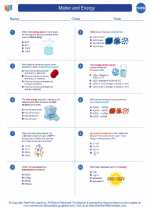Bladder
The bladder is a hollow, muscular organ in the pelvic area of the body that stores urine before it is expelled from the body. It is a part of the urinary system and plays a crucial role in the elimination of waste from the body.
Anatomy of the Bladder
The bladder is located in the pelvis, behind the pubic bone. It is a muscular organ that is capable of expanding as it fills with urine. The bladder has a smooth inner lining known as the urothelium, which allows it to stretch as it fills and contract when it empties.
Function of the Bladder
The main function of the bladder is to store urine until it is convenient to expel it from the body. When the bladder is full, it sends signals to the brain indicating the need to urinate. The brain then sends signals to the bladder to contract and expel the urine through the urethra.
Common Bladder Disorders
- Urinary Incontinence: This is the involuntary leakage of urine and can occur due to weak bladder muscles or an overactive bladder.
- Urinary Tract Infections (UTIs): These are infections that occur in the bladder or urinary tract and can cause pain and discomfort during urination.
- Bladder Stones: These are hard masses of minerals that can form in the bladder and cause pain and difficulty urinating.
- Interstitial Cystitis: This is a chronic condition causing bladder pain and pressure, often accompanied by the need to urinate frequently and urgently.
Study Guide
When studying the bladder, it's important to understand its anatomy, function, and common disorders. Here are some key points to focus on:
- Describe the location of the bladder in the body and its anatomical structure.
- Explain the role of the bladder in the urinary system and the process of urine storage and elimination.
- Identify and describe common bladder disorders, including their symptoms and potential causes.
- Discuss the importance of maintaining bladder health through proper hydration, hygiene, and medical care when necessary.
Understanding the bladder and its function is essential for maintaining overall urinary system health and well-being.
.◂Chemistry Worksheets and Study Guides High School. Matter and Energy

 Worksheet/Answer key
Worksheet/Answer key
 Worksheet/Answer key
Worksheet/Answer key
